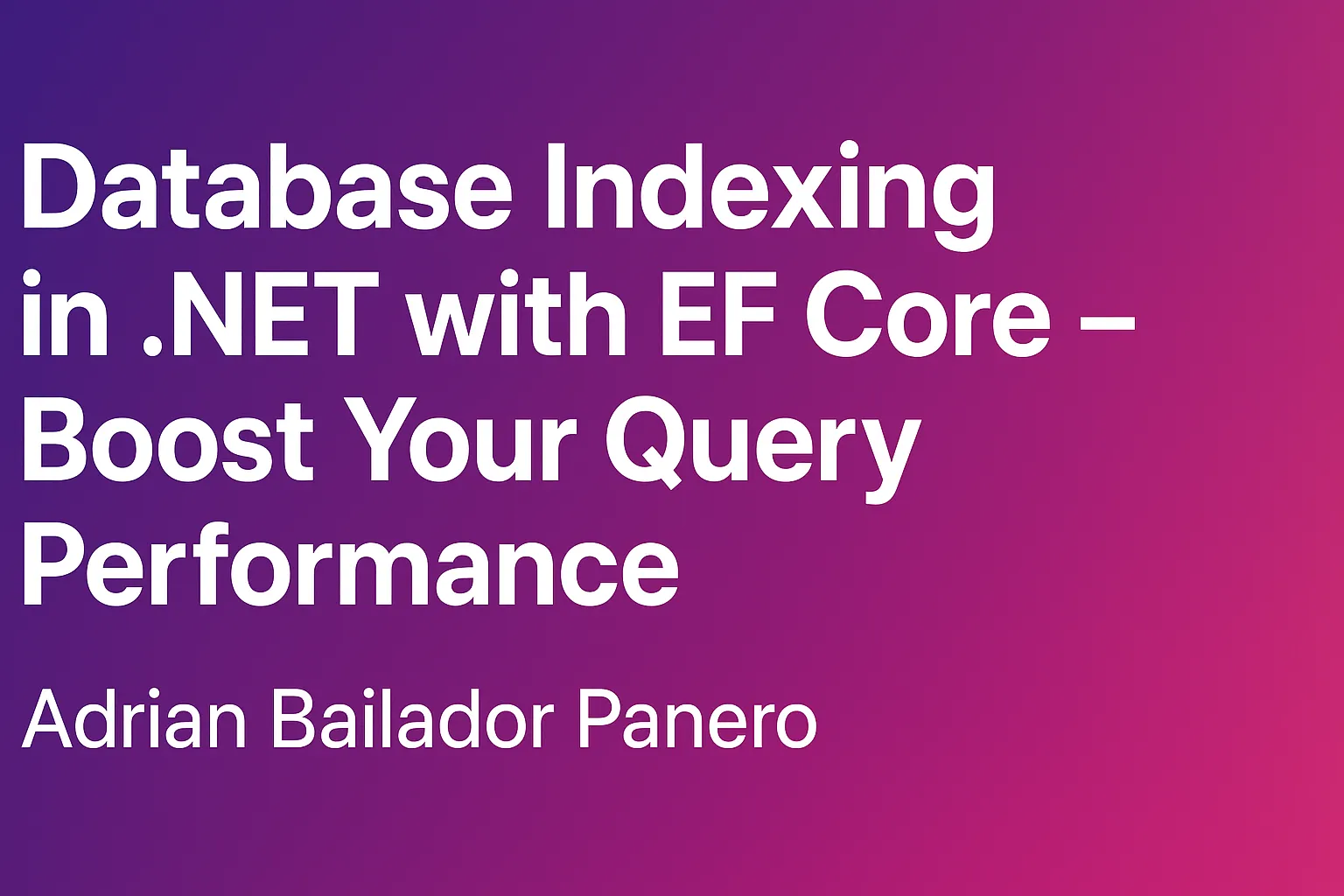
Imagine this: your API takes 500 ms to fetch a single user record. With a simple index, that same query can drop to 5 ms.
That’s the power of database indexing — one of the simplest yet most effective ways to supercharge your queries.
In this guide, we’ll explore how to create and manage indexes in Entity Framework Core, when to use them, when not to, the difference between clustered and non-clustered indexes, and we’ll run a couple of benchmarks to see the impact in action.
🔍 What is a Database Index?
A database index is like a “fast lookup table” for your data. Instead of scanning every row, the database can jump straight to the matching records.
Benefits:
- Faster lookups (
WHERE,JOIN,ORDER BY) - More efficient queries under heavy load
Trade-offs:
- Slower inserts/updates due to index maintenance
- Additional storage usage
📑 Clustered vs Non-Clustered Indexes
In SQL Server (and many relational databases), you’ll find two main types of indexes:
- Clustered index – defines the physical order of data in the table. Each table can have only one clustered index (often on the primary key).
- Non-clustered index – a separate structure that points back to the data. You can have multiple non-clustered indexes per table.
👉 In most cases, EF Core will create a clustered index automatically on the primary key. The indexes you define with Fluent API or Data Annotations are typically non-clustered.
🖼 How an Index Works – Visual Overview
Table: Users
+----+----------+----------+
| Id | Email | Name |
+----+----------+----------+
| 1 | a@ex.com | Alice |
| 2 | b@ex.com | Bob |
| 3 | c@ex.com | Charlie |
+----+----------+----------+
Index on Email:
a@ex.com --> Row 1
b@ex.com --> Row 2
c@ex.com --> Row 3Instead of scanning the entire Users table, the database jumps directly to the row using the index pointer.
📦 Setting Up EF Core
dotnet add package Microsoft.EntityFrameworkCore
dotnet add package Microsoft.EntityFrameworkCore.Design🛠 Creating Indexes in EF Core
Fluent API
using Microsoft.EntityFrameworkCore;
class AppDbContext : DbContext
{
public DbSet<User> Users { get; set; }
protected override void OnModelCreating(ModelBuilder modelBuilder)
{
modelBuilder.Entity<User>()
.HasIndex(u => u.Email)
.IsUnique();
modelBuilder.Entity<User>()
.HasIndex(u => new { u.LastName, u.FirstName });
}
}
class User
{
public int Id { get; set; }
public string Email { get; set; }
public string FirstName { get; set; }
public string LastName { get; set; }
}Data Annotations
using Microsoft.EntityFrameworkCore;
[Index(nameof(Email), IsUnique = true)]
[Index(nameof(LastName), nameof(FirstName))]
class User
{
public int Id { get; set; }
public string Email { get; set; }
public string FirstName { get; set; }
public string LastName { get; set; }
}🚀 Applying the Index
dotnet ef migrations add AddIndexes
dotnet ef database update⚡ Benchmark 1 – Lookup Query
Let’s measure query performance with and without an index on Email.
var emailToFind = "user50000@example.com";
var sw = Stopwatch.StartNew();
var user = await context.Users
.AsNoTracking()
.FirstOrDefaultAsync(u => u.Email == emailToFind);
sw.Stop();
Console.WriteLine($"Query time: {sw.ElapsedMilliseconds} ms");Example results:
| Scenario | Time (ms) |
|---|---|
| Without index | 180–220 |
| With index | 2–5 |
⚡ Benchmark 2 – ORDER BY Query
Indexes can also dramatically speed up sorting operations:
var sw = Stopwatch.StartNew();
var users = await context.Users
.AsNoTracking()
.OrderBy(u => u.Email)
.Take(10)
.ToListAsync();
sw.Stop();
Console.WriteLine($"OrderBy query time: {sw.ElapsedMilliseconds} ms");Example results:
| Scenario | Time (ms) |
|---|---|
| Without index | 400–500 |
| With index | 10–20 |
📌 Special Note on SQLite
This guide uses SQLite for simplicity, and it does support indexes. However, keep in mind:
- No filtered indexes
- No include columns
- Limited advanced indexing strategies compared to SQL Server or PostgreSQL
👉 The basics (unique, multi-column, normal indexes) work perfectly fine.
🚫 When NOT to Index
While indexes improve reads, they aren’t always a good idea.
Avoid indexing:
- Columns with low selectivity (e.g.,
IsActiveboolean). - Columns that are frequently updated (index maintenance can slow down writes).
- Tables with very small row counts (the index overhead may outweigh benefits).
✅ Conclusion
Indexes are a must-have tool for improving query performance, but they require thoughtful use. With EF Core, you can easily define them in code and keep them in sync via migrations.
Key takeaways:
- Use indexes for frequently queried columns.
- Understand the difference between clustered and non-clustered indexes.
- Avoid over-indexing.
- Always measure performance impact.
📖 Further reading: